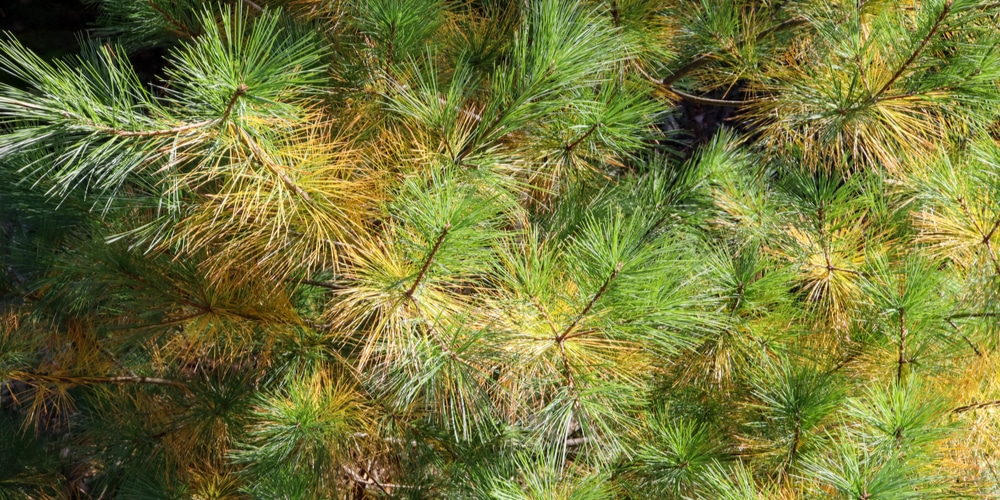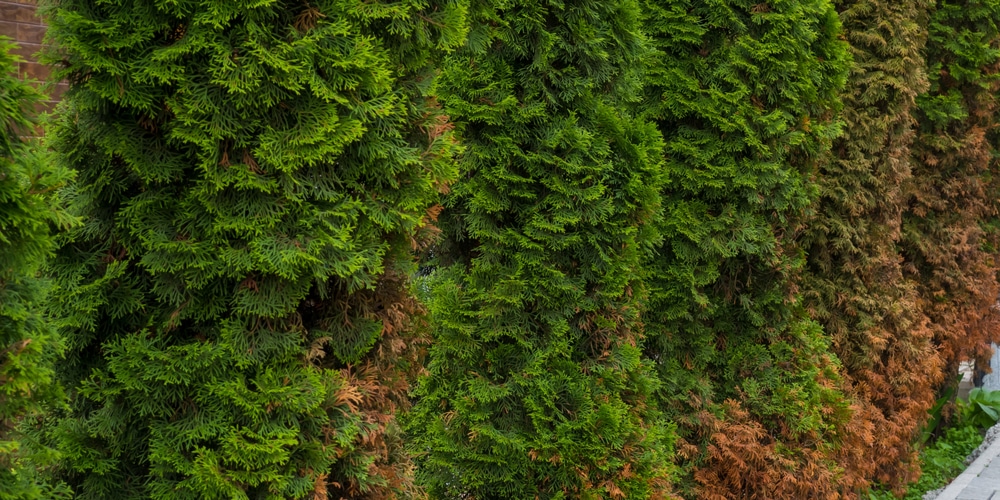When it comes to evergreen trees, arborvitaes are some of the most beautiful. Their lush green needles are truly breathtaking. However, when they turn brown, these trees can look bad. If your arborvitae has turned brown, you need to take action. Today you are going to learn why your arborvitae is turning brown, and what you can do to prevent this problem.
What Causes Arborvitaes to Turn Brown
Normally, arborvitaes are lush and green, but some conditions can cause them to turn brown. Below are some reasons your arborvitae may be having needle issues.
Seasonal Needle Drop
Seasonal needle drop is a common issue that causes arborvitaes to turn brown. While this is an annual event that you can’t prevent, you can minimize the effects. By following cultural practices, you can limit browning to old-growth and protect new growth.
Severe Drought
In normal conditions, you don’t need to water most arborvitae varieties. On the other hand, if your local area is experiencing severe drought, it may cause your arborvitae to turn brown. To prevent this from happening, make sure to water your arborvitae during these harsh times. This will help keep your tree healthy, and it will remain lush.
Disease
Another serious cause of leaf browning is disease. While these trees are normally disease-resistant, some diseases can cause leaf damage.
Phomopsis twig blight can turn the needles of the arborvitae brown. This condition will begin at the tips of new growth and causes the needles to turn yellowish-brown.
Cercospora leaf blight is another condition that is similar to other forms of blight. It affects the bottom branches of the tree and works its way to the top. If untreated, this form of blight can kill a tree.
Always keep an eye out for disease in your arborvitae trees. Doing so will keep your plants healthy and happy.
Pests
Pests are normally not an issue when it comes to arborvitaes. But some pests can make the needles of these beautiful green trees turn brown. One pest, in particular, the bagworm, can infest the tree and damage the foliage.
Spider mites can also cause these trees to become brown. These nasty pests can take over a tree if left untreated. Spider mites are difficult to see because they are so small.
To get rid of pests on arborvitae trees you should talk to a tree care specialist. While you can try to treat these conditions on your own, it is best to hire someone that knows what they are doing.
Deer Damage
During the summer months, deer won’t bother arborvitaes. They really don’t like the taste of these green shrubs and avoid eating them. However, when the weather turns cold, and their natural food sources dry up, they will prey on these trees. This can cause the trees to turn brown when they become damaged by deer.
To prevent deer from eating your arborvitaes, you should use a combination of deer spray and physical barriers. You can purchase deer spray at most big box stores, and you can make a physical barrier with netting or burlap. To prevent deer damage, make sure you cover the tree up to 8-feet. Doing so will keep the deer away.
Winter Burn
If you live in an area that sees freezing temperatures, you will probably notice your arborvitae trees turning brown. This is called winter burn, and it is a common problem that affects these shrubs. Luckily this condition is completely preventable.
To protect your trees from getting winter burn, make sure you cover young trees with burlap. This will help protect them from the cold and keep the wind off them.
Mulching your trees can also help prevent winter burn. Mulch will help give your trees the nutrients they need to thrive. This will also help protect the root system of the trees which can help ward off winter burn.
Avoid fertilizing arborvitae trees in the late summer or fall. This can promote new growth and prevent the tree from going into dormancy. New growth will be subject to winter burn and may stunt the growth of your trees during the spring.
Arborvitae Turning Brown: Conclusion
Now that you know WHY an arborvitae turns brown, you should check out our article on HOW to save a brown arborvitae.
Now that you know why your arborvitaes are turning brown, why not do something to prevent this common issue from happening. Protecting your trees from pests, disease, winter burn, and drought will keep them looking healthy all year long.
Related Article: How to Trim Overgrown Arborvitae?

